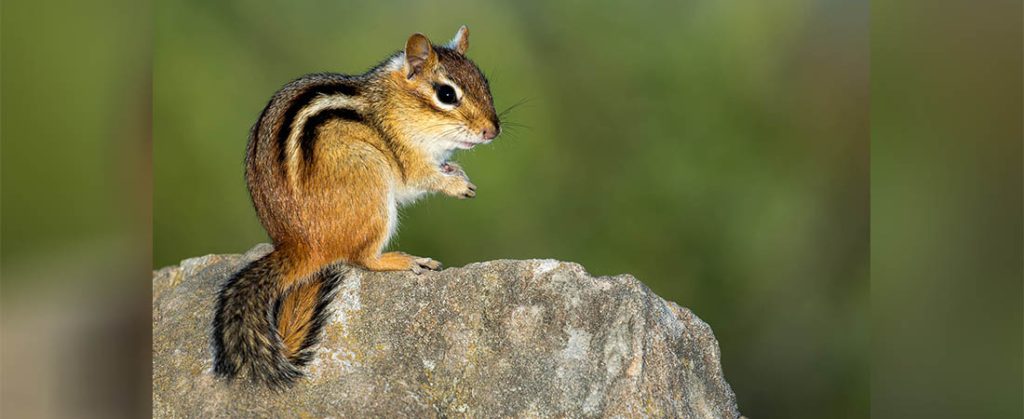
For the second year in a row, biologists with the N.C. Wildlife Resources Commission are asking for the public’s assistance in helping them track chipmunks east of I-95 in North Carolina.
While biologists have long known chipmunks were found in the state north and west of Wake County, a photograph of a chipmunk from Wilmington in 2021 got them wondering just how far east and south these tiny rodents have travelled. So, last year, they submitted a public appeal asking for observations. For this year, biologists are again asking anyone who sees a chipmunk east of I-95 to:
– Take a photo
– Note the location (GPS coordinates are preferred)
– Email the photo to hwi@ncwildlife.org
Much smaller than squirrels, chipmunks are only 8 to 10 inches long (counting 3 to 4 inches of tail), with reddish-brown fur, two white stripes bordered by black on the sides and one black stripe down the center of the back. Their most distinguishing characteristic is their large cheek pouches, which they use to store and carry food.
Although chipmunks can be found in both urban and rural habitats, they prefer open woodlands or forest edges, which provide plenty of cover and dry hillsides for digging burrows. Burrows provide protection from predators such as hawks, owls, foxes and snakes, as well as a safe place to sleep during the winter.
The best times to spot chipmunks are early morning and late afternoon — those are the times chipmunks are most active, gathering and storing food, usually nuts, seeds and berries, although these opportunistic predators will also snack on insects, small amphibians and birds, if given a chance.
Also, look down and not necessarily up to spot one, according to Andrea Shipley, a mammalogist with the Commission. “Unlike squirrels, chipmunks spend most of their time foraging on the ground, climbing trees only occasionally,” Shipley said.
“We really want to encourage people to send us photos and information of any chipmunks they see in any county east of I-95,” Shipley added. “We will use this information to update our chipmunk distribution map, which we will then use to assess the animal’s conservation status in the state and any need for conservation planning or research we may do in the future.”
For more information on eastern chipmunks in North Carolina, visit the Commission’s eastern chipmunk species page, www.ncwildlife.org/eastern-chipmunk.
By N.C. Wildlife Resources Commission

